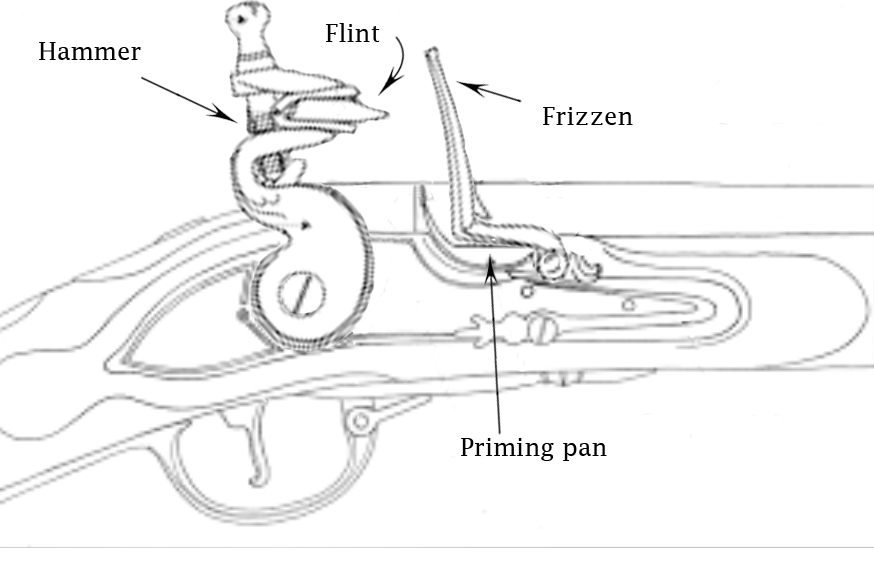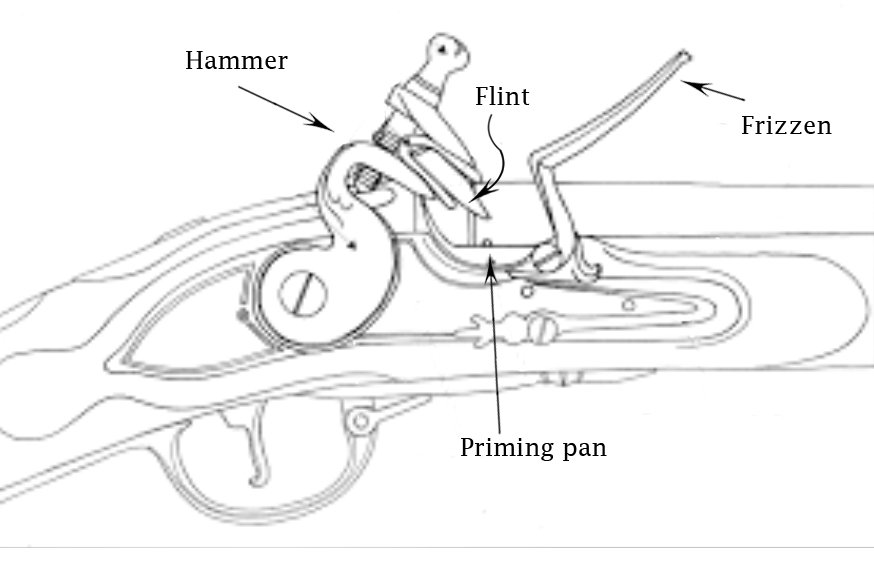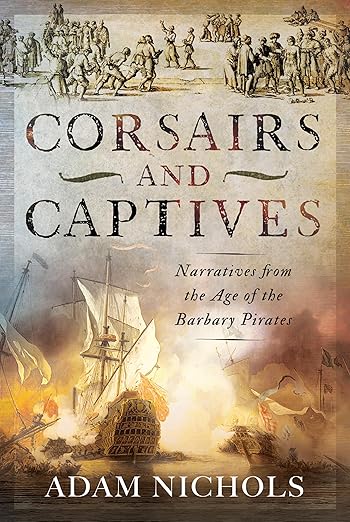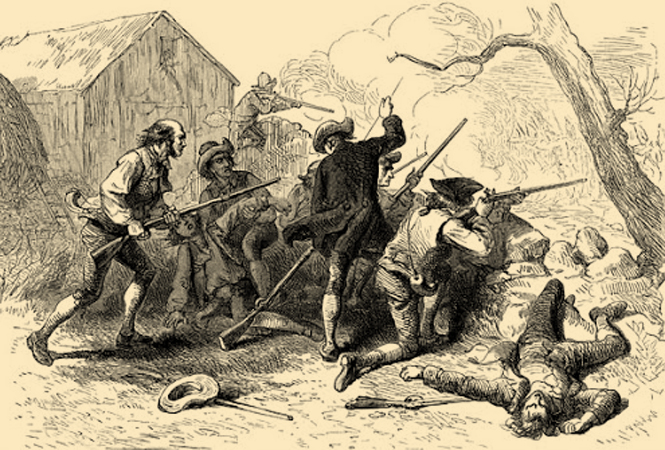This week’s blog post is something a little different: we’re going to take a look at the muskets that Barbary corsairs used.
Barbary corsairs, remember, were not technically pirates. Technically, they were privateers, since they were issued with official documents from the authorities of their home ports authorizing them to attack and loot enemy shipping. Europeans did exactly the same thing (in their case, the official document was usually referred to as letters of marque).
Barbary corsairs behaved like pirates, though. They violently attacked ships and coastal settlements. And like pirates everywhere, they were heavily armed. They had to be, given their profession.
The seventeenth century was a period of ascendancy for barbary corsairs. They vastly expanded the range of their predatory activities and increased the amount of booty they acquired and the number of captives they took.
The seventeenth century was also the period of ascendancy of gunpowder weapons. Cannons became more and more common aboard ships, and more and more necessary, as an arms race of sorts got underway. The same held true for hand-held guns as well.
Barbary corsairs used muskets. They had to. By the seventeenth century, just about everybody had muskets.
Look at the following, for instance, from a description of the Barbary corsair attack in the summer of 1627 on the island of Heimaey, one of the Westman Islands, located off the south coast of Iceland.
In the excerpt below, the corsairs have sailed to the south end of Heimaey to disembark their forces rather than chance a landing at the harbor on the island’s north end, which the islanders defended. Lauritz Bagga, the Danish Factor of the island (he was the representative of the Danish authorities; Iceland was a Danish possession in those days), rode south on horseback to see what was happening:
_______________
When the Danish Factor came to the island’s southern shore, he saw that the Turks [i.e., the corsairs] were in a great hurry to launch three boats full of men. Those who were there thought that there were no less than two hundred men in those boats at the least. Seeing all this, the merchant sent a messenger in haste to the Captain of the Factor’s ship, instructing the Captain to come with muskets and men to prevent the pirates from making land.
The Factor stayed there on his horse, with a few men who had come south with him, ready to repel the pirates. Some of these men were panic stricken, however, seeing the awful crowd of pirates on their way to the land. They started to scatter to their wives and children in order to get them away to safety.
As the murderous pirates drew near to the rocky shore, the merchant fired his musket at their leading boat. The pirates only shouted wickedly at him, brandished their headgear insolently, and leaped from their boats onto the strand, one after another. Then they all charged towards the Factor, Lauritz Bagga.
When he saw this, the Factor could wait no longer, and he galloped back toward the harbor.
[Some little time later] the Factor embarked on a boat with his family as quickly as possible. The ship’s Captain, when they passed him, did not want to leave his ship, although he gave permission to his crew to leave.
However, as the Danish Factor was moving away, he felt uneasy because the Captain was left behind alone, and so he sent the ship’s boat back to get him. At this moment, the pirates near the Danish houses began firing their muskets at the ship. The Captain jumped aboard the ship’s boat, and the crew rowed quickly away to the boat where the Factor and his family were waiting. Then they all started to row as fast as they could towards the mainland…
The Turks searched in every corner and in every hole on the island. They rooted about everywhere, like boars, and no rock or cliff stopped them, since they climbed as well as the most expert Icelanders, as the following example shows.
Without ropes, they climbed up to the caves where the fishermen keep their fish, a height of no less one hundred fathoms. From those caves, they fetched women and children and made them climb down. Those whom they could not capture without a problem, they shot to death. Some of those whom they shot fell from the caves a hundred fathoms, some sixty, some were left where they had been shot, looking as though they were alive.
_______________
All this seems fairly familiar—people shooting at each other with muskets.
We’re all pretty familiar with muskets. They look rather like longer versions of modern-day sporting rifles, the difference being that muskets were single-shot muzzled loaders (you jammed the musket ball down the barrel to load the gun).
Here’s an illustration of what most people think of when they think of a musket:
In America in particular, the musket is invested with a romantic and heroic aura because of its role in the American revolution in the late 1770s. The illustration at the top of this post depicts a squad of intrepid American freedom fighters skirmishing with British forces (notice the man in the center, with his back towards us, holding a ramrod in his right hand and loading his musket by driving the musket ball home into the barrel).
The muskets used in the American revolution, and the muskets most people think of when they think of muskets, were flintlock muskets.
To load a flintlock musket, you had to pour a charge of gunpowder down the barrel, stuff in a patch of cloth or paper, thumb a lead musket ball into the barrel’s mouth, and then ram it all home with the ramrod so that powder, patch, and ball were all solidly packed into the bottom end of the barrel.
Then you had to prime the pan—as the term was. This is where the “flintlock” aspect came in.
In a modern gun, the gunpowder and bullet are both contained in a brass cartridge. The back end of the cartridge is struck by the firing pin in the hammer, the gunpowder explodes inside the cartridge, the bullet shoots out, the cartridge is ejected, and a new one seated in its place. In automatic weapons, the whole process takes a fraction of a second.
In a flintlock musket, the powder/patch/ball package is set alight in a different way.
A small hole in the side of the base of the barrel leads to a priming pan. You load special, very finely ground gunpowder into this pan, cover that with a curved metal plate called a frizzen, and then cock the hammer. The hammer has a piece of flint set into it. When you pull the trigger, the hammer snaps forwards, striking the frizzen. This creates a spark that sets the priming powder alight in the pan. This, in turn, sets the main charge in the barrel alight.
The illustrations below show the mechanism of a flintlock musket. Figure 1 shows the hammer cocked and the frizzen closed (covering the priming pan). Figure 2 shows the frizzen knocked back and the hammer about to strike the priming pan.


This was a pretty reliable system—unless it got wet. Then it was useless. Your musket became an art object.
Flintlocks were first devised in the early-mid seventeenth century, but they didn’t really become the standard, universal version of the musket until the eighteenth century.
In the first half of the seventeenth century, when Barbary corsairs were boiling out of the Mediterranean and rising in power—and making long-distance raids like the one to Iceland—they would not have been using flintlocks (the Heimaey islanders would not have been using flintlocks either).
Instead, Barbary corsairs would have been armed with matchlocks—a very different sort of weapon.
For a discussion of matchlocks and the role they played in the Barbary corsair enterprise, see next week’s post in this blog.

Corsairs and Captives
Narratives from the Age of the Barbary Pirates
View Amazon listing
The Travels of Reverend Ólafur Egilsson
The story of the Barbary corsair raid on Iceland in 1627
View Amazon listing
